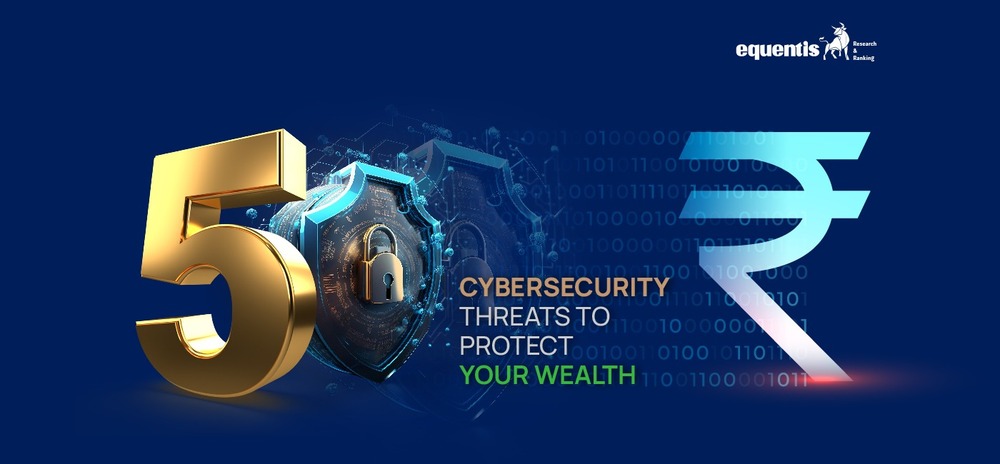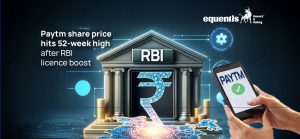The digital age has introduced us to a convenient and quick way of carrying out everyday financial transactions and building and managing long-term wealth. On the flip side, however, we are also vulnerable to increasing cyber threats and cybersecurity breaches that can lead to devastating financial losses, including identity theft and reputational damage. Thus, keeping our financial information safe is crucial to safeguard our wealth. This goes beyond merely diversifying investments and includes protecting financial assets online.
Cybersecurity generally entails protecting computer systems, networks, and data from unauthorized access, theft, or damage. In finance, it involves safeguarding sensitive financial information, such as bank account details, credit card numbers, and investment portfolios, from cyber threats like hackers, malware, and phishing scams.
Here are the top 5 financial cybersecurity threats you must know of:
Phishing Attacks
Among the most prevalent and malicious cybersecurity threats targeting individuals and financial institutions are emails or messages that appear to be from legitimate sources. However, they trick you into revealing sensitive information like login credentials or account details. Phishing attacks often use social engineering tactics — customer service representatives or social media to gather personal and financial information. Typically, these attacks create a sense of urgency to manipulate you into clicking on malicious links or providing personal information. Unsuspecting individuals fall victim to identity theft, financial fraud, or account takeover (ATO).
Ransomware
A type of malicious software designed to encrypt files or lock users (financial institutions, businesses, and individuals alike) out of their devices until a ransom is paid, ransomware attacks have become increasingly common and sophisticated. Cybercriminals issue ransomware through phishing emails, compromised websites, or vulnerable network systems. Once infected, you may lose access to critical financial data like banking records, investment portfolios, or sensitive personal information.
Credential Stuffing
Cybercriminals use this technique to leverage compromised usernames and passwords to gain unauthorized access to online accounts. When individuals reuse the same login credentials across multiple platforms or do not set strong, unique passwords, they become vulnerable to credential-stuffing attacks. Cybercriminals test stolen credentials against various websites and services, exploiting the widespread practice of password reuse to compromise accounts and access sensitive financial information. This attack poses a significant risk to individuals’ financial security.
Injection Attacks – SQL Injections (SQLi) and Cross-Site Scripting (XSS)
In injection attacks, cybercriminals inject a query or code into a program that gives them access to sensitive data and enables them to execute commands or alter a system remotely. They leverage “injection flaws” or vulnerabilities in a system to receive malware or malicious queries to gain unauthorized access.
DDoS or Distributed Denial of Services Attacks:
The financial sector commonly has a diverse attack surface, including banking IT infrastructure, payment portals, and more. Thus, the industry experiences DDoS attacks where the server is flooded with fake connection requests, forcing it offline. This attack has two-fold repercussions on an institution, as criminals can make additional cyberattacks while the security team is distracted from dealing with the original problem.
While these are some of the most common, you must know many more such threats exist. As cybercriminals attempt to outplay cybersecurity, there are strategies to help you protect your financial assets.
How To Protect Your Financial Assets Via Cybersecurity?
Strong Password Practices
Passwords are our first line of defense against unauthorized access to online accounts. Using weak or easily guessable passwords makes us vulnerable to cyberattacks. To enhance your password security, follow these best practices:
- Use complex passwords comprising uppercase and lowercase letters, numbers, and special characters.
- Avoid using easily guessable information such as your birthdate, pet’s name, or common phrases.
- Use unique passwords for each account to prevent a single breach from compromising multiple accounts.
- Consider using a reputable password manager to generate and store your passwords securely.
Enable Two-Factor Authentication (2FA)
Two-factor authentication adds an extra layer of security, requiring users to provide two verification forms before accessing the accounts. Typically, this involves a password or something you have, like a code sent to your phone or generated by an authenticator app. By enabling 2FA, even if cybercriminals manage to obtain your password, they would still need the second factor to gain access, significantly reducing the risk of unauthorized account access.
Regularly Update Software and Devices
Outdated software and devices often contain vulnerabilities that can give someone unauthorized access to your systems. So, ensure that all your software, operating systems, web browsers, antivirus programs, and applications are regularly updated with the latest security fixes. Also, consider enabling automatic updates to protect you against emerging threats.
Be Cautious of Phishing Attacks
Phishing attacks remain among the most common and effective methods cybercriminals use to steal sensitive information, including financial credentials. To avoid falling victim to phishing scams, practice the following precautions:
- Beware of unsolicited communications, especially those requesting sensitive information or urging immediate action.
- Checking emails and websites for spelling errors, unusual URLs, or suspicious requests.
- Never click on links or download attachments from unknown or suspicious sources.
- Educate yourself and your family members about the common signs of phishing attacks and how to respond appropriately.
Secure Your Network and Devices
Securing your home network and devices is paramount for protecting your financial information from cyber threats.
- Configure your wireless network with a strong encryption method (such as WPA2 or WPA3) and a unique, hard-to-guess password.
- Consider setting up a firewall to monitor and control incoming and outgoing network traffic.
- Ensure all your devices, including computers, smartphones, and IoT devices, are equipped with up-to-date security software and configured for regular security updates.
Safeguarding your wealth in the digital age requires proactive measures to protect your financial assets from cyber threats. You can significantly reduce the risk of financial fraud by investing in cybersecurity.
*Disclaimer Note: The securities quoted, if any, are for illustration only and are not recommendatory. This article is for education purposes only and shall not be considered as recommendation or investment advice by Research & Ranking. We will not be liable for any losses that may occur. Investment in securities market are subject to market risks. Read all the related documents carefully before investing. Registration granted by SEBI, membership of BASL, and certification from NISM in no way guarantee the performance of the intermediary or provide any assurance of returns to investors.
FAQs
How can I avoid falling victim to phishing scams?
Be cautious of unsolicited emails or messages asking for personal or financial information. Verify the source before sharing any sensitive details.
How does multi-factor authentication (MFA) work?
Multi-factor authentication requires users to authenticate their identity using multiple factors, such as passwords, biometrics, or security tokens. This adds an extra layer of security and makes it harder for unauthorized individuals to access accounts.
Is data encryption necessary for financial transactions?
Yes, data encryption ensures that sensitive information remains confidential during transmission, preventing unauthorized access.
Why are regular software updates important for cybersecurity?
Regularly updating security software ensures that known vulnerabilities are plugged in, reducing the risk of exploitation by cybercriminals.
What role does employee training play in cybersecurity?
Educating employees about best practices helps create a security-aware culture within an organization, reducing the likelihood of security breaches.
How useful was this post?
Click on a star to rate it!
Average rating 5 / 5. Vote count: 2
No votes so far! Be the first to rate this post.
I’m Archana R. Chettiar, an experienced content creator with
an affinity for writing on personal finance and other financial content. I
love to write on equity investing, retirement, managing money, and more.
- Archana Chettiar













